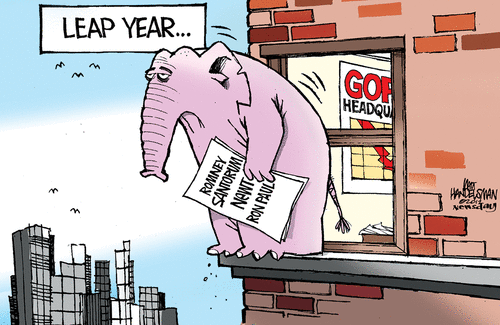2012 being a leap year, today is the extra day. Some of us are aware of the rule that says that we add a leap day for years that are divisible by 4 but not if it is divisible by 100 unless that year is also divisible by 400.
The reason for these complicated leap day rules is that it takes 365 days, 5 hours, 48 minutes, 45 seconds for the Earth to go around the Sun (equinox to equinox). A calendar that keeps to just 365 days will ‘lose’ 5 hours 48 minutes, 45 seconds every year, which over four years comes out to 23 hours 15 minutes. By adding a day, we end up ‘gaining’ just 45 minutes every four years.
But over 100 years, this adds up to 18 hours and 45 minutes. So by not adding the extra leap day on the years that are divisible by 100, we end up ‘losing’ just 5 hours and 15 minutes every 100 years. Over 400 years we end up losing 21 hours. Hence by adding a leap day for every year divisible by 400, we end up ‘gaining’ just 3 hours over the 400 years. Theoretically, by not adding a leap day for every year that is divisible by 3,200, we would be back in sync.
All clear now? And now, for another interpretation of leap year…


That… is awesome!
thank you
That’s one strong ledge!
Poor elephant what did it do to deserve being the Republican symbol!
I’ve never seen the need to make things more complicated than necessary.
A year is 365.242 days, according to the time given:
5h48m45s = 20925 seconds
20925/86400 = 0.2421875
That’s 242 leap years every thousand years instead of 250. If you drop the century leap years not divisible by 500 (11/12/13/14, 16/17/18/19), it’s close enough: out by 4.5 hours every 1000 years. Anyone who wants more than that is being anal retentive or doing serious science.
.